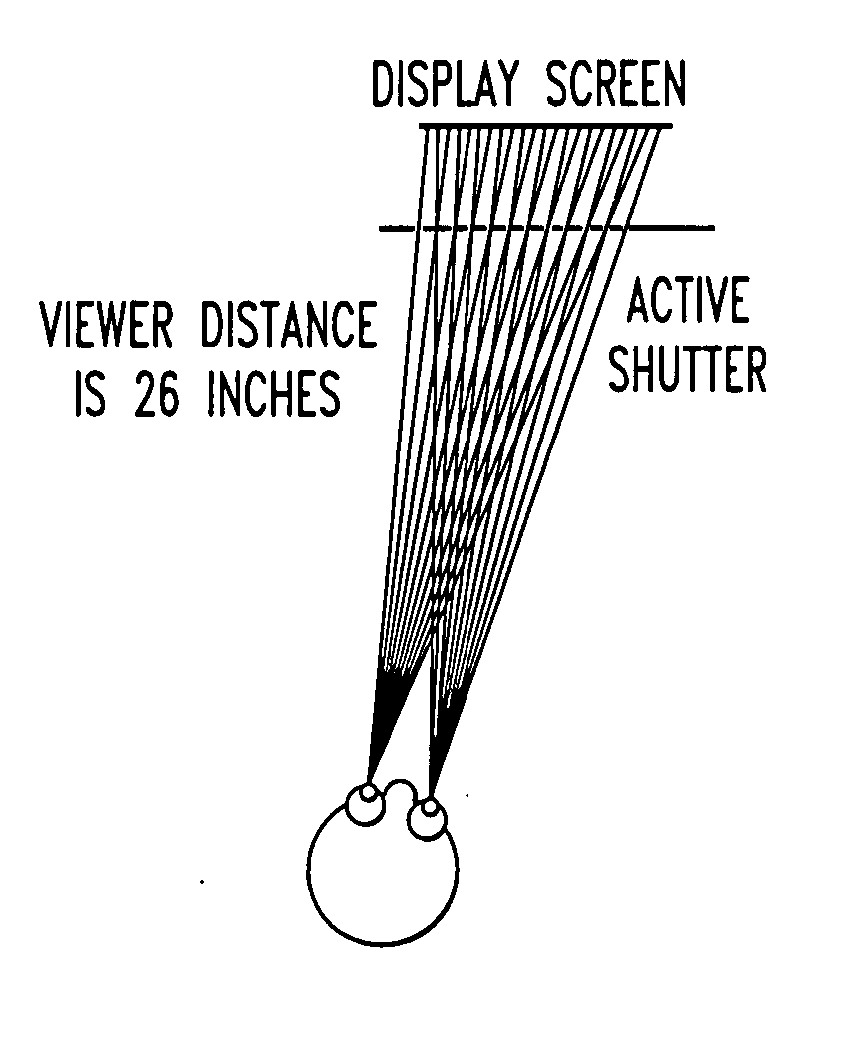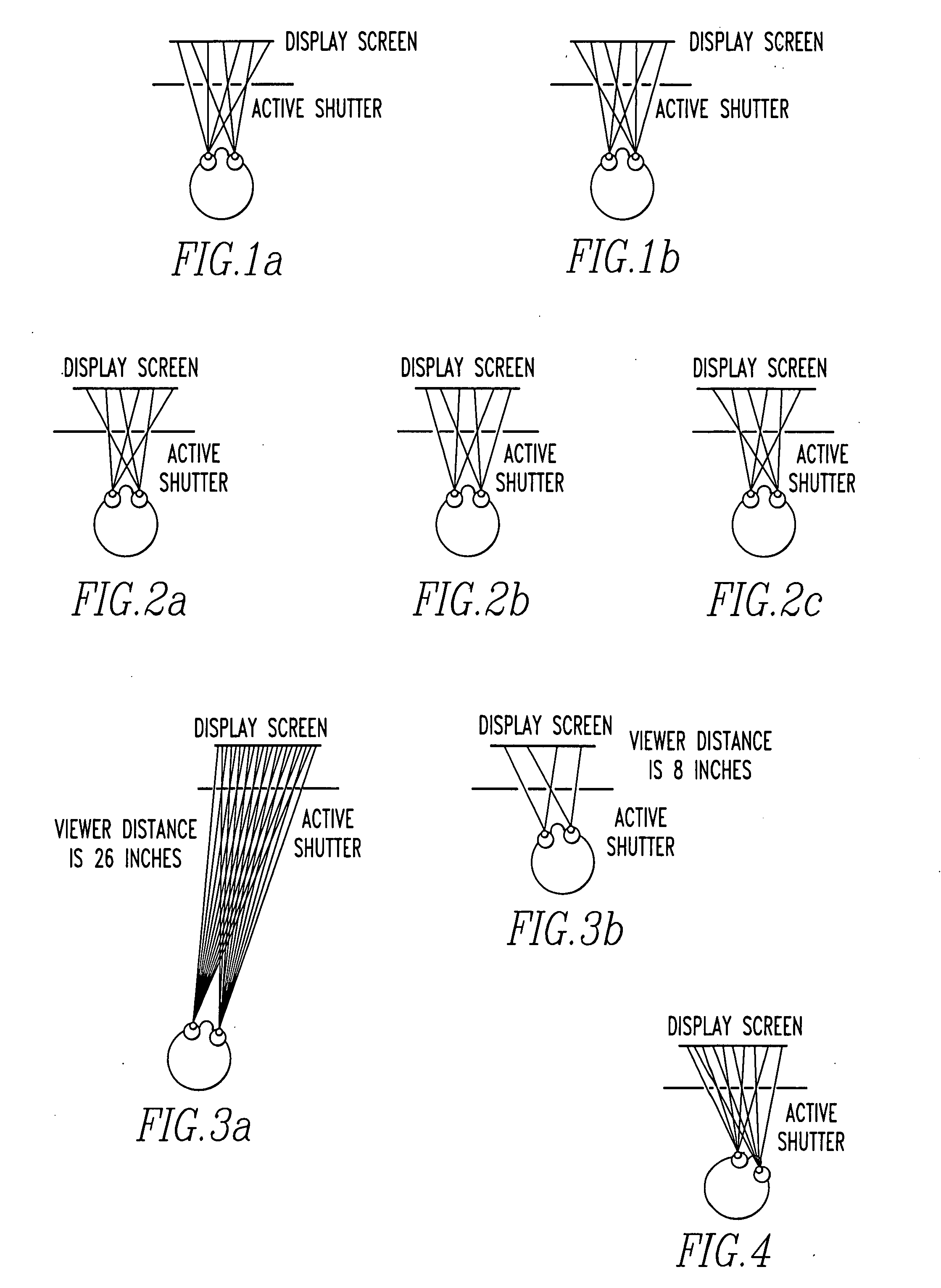Autostereoscopic display
a display and display technology, applied in the field of display devices, can solve the problems of significant “settling time” (and therefore latency), not found wide acceptance of three-dimensional viewing among most students, educators, graphic designers,
- Summary
- Abstract
- Description
- Claims
- Application Information
AI Technical Summary
Problems solved by technology
Method used
Image
Examples
Embodiment Construction
[0027] Referring now to the drawings wherein like reference numerals refer to similar or identical parts throughout the several views, and more specifically to FIG. 8 thereof, there is shown an apparatus 10 for displaying an image to an observer. The apparatus 10 comprises a display screen 12 upon which stripes of the image appear in at least three distinct phases. The apparatus 10 comprises a light blocking shutter 14 disposed in front of the display screen 12 forming a stripe pattern which lets through only ⅓ of each stripe of the image on the display screen 12 during each of the at least three distinct phases. The apparatus 10 comprises a computer 16 connected to the display screen 12 and the light blocking shutter 14 which changes the phases so in each phase the stripe pattern is shifted laterally, which renders two 3D scenes corresponding to the eyes of the observer, which produces a proper left / right orientation pattern for each of the three phases and which interleaves the le...
PUM
 Login to View More
Login to View More Abstract
Description
Claims
Application Information
 Login to View More
Login to View More - R&D
- Intellectual Property
- Life Sciences
- Materials
- Tech Scout
- Unparalleled Data Quality
- Higher Quality Content
- 60% Fewer Hallucinations
Browse by: Latest US Patents, China's latest patents, Technical Efficacy Thesaurus, Application Domain, Technology Topic, Popular Technical Reports.
© 2025 PatSnap. All rights reserved.Legal|Privacy policy|Modern Slavery Act Transparency Statement|Sitemap|About US| Contact US: help@patsnap.com



